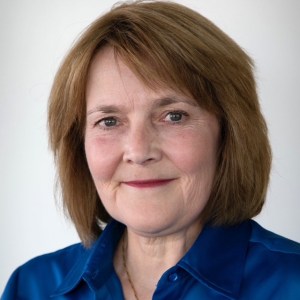The four editors on the panel could probably do each others’ presentations, joked Neil Chase, editor of the Mercury News and East Bay News in the San Francisco Bay area. That’s the result of spending a year together talking through their challenges.
Four news organizations that participated in last year’s Knight-Lenfest Newsroom Initiative shared lessons behind their digital accomplishments on Wednesday in an ASNE panel in Austin, Texas, where the news leaders’ organization held its annual conference.
The initiative’s yearlong program is designed to help news organizations become more digitally savvy. The principles they learn are called Table Stakes, a play on what it takes to win at poker. Throughout the year, the news organizations learn performance management tools, receive coaching and get advice from their peer group.
All of the four news leaders on the ASNE panel had stories of online success:
— The Houston Chronicle revamped its newsletter strategy and expects that by the end of this year, it likely will have more readers coming to its subscriber website through newsletter click-throughs than home-page visits. “We had all sorts of newsletters; they just weren’t strategic."
Nancy Barnes, editor of the Chronicle, said that she focused on newsletters as a key driver to the larger subscriber funnel. She said a morning report newsletter has grown dramatically, from 1,000 subscribers in January to 20,000 in August.
“We’ve had huge growth in search engine traffic,” she said. The Chronicle focused on SEO best practices to get that surge.
— Stan Wischnowski, Philadelphia Media Network’s executive editor and senior vice president, said his news team takes pride in using all of the seven Table Stakes principles in executing its online strategy, which is an aggressive digital subscription model. “We’re measuring everything we do,” he said.
One year after focusing on the performance management models taught in the Table Stakes program, digital-only paid subscribers are now at 25,109, about 25 percent above the goal they had established for the newsroom. "There were tools; there was inspiration; there was a pathway,” he said. “Those things really helped."
How did they do it? Through workflow changes, technology investments, smarter use of data, roles and skills adjustments and a philanthropy boost that helped the overall financial health of the news organization. Philadelphia Media Network has been owned by a nonprofit organization for three years.
“I can’t emphasize enough the investment in technology,” Wischnowski said. His organization is installing Arc Publishing, a content management system built by the Washington Post. The team also has engaged the vendor Hearken in building an audience team.
“We’re on pace to hire back 45 new journalists,” Wischnowski said, after buyouts in 2017.
— George Stanley, chief executive of news for the Milwaukee Journal Sentinel, said that despite having three owners in two years, his news team learned in Table Stakes that they could grow audience and revenue. The journalists had more control than they thought, he said.
After its Table Stakes experience, the Milwaukee Journal Sentinel grew page views 20 percent year over year since 2017, unique visitors by 29 percent and digital-only subscriptions from 13,000 to 30,000.
“We were getting data on best practices,” he said of his participation in Table Stakes. “We were learning effective innovation concepts. … Watch the numbers. Iterate. Adjust.”
His advice to other news organizations: “Stop doing the stuff that’s widely available from other sources. Give up the stuff that nobody is reading.
“We’re not a cost center any more; we’re the value proposition of our business. … Great journalism sells.”
— Chase said that despite doing fewer stories, the Mercury News and East Bay Times grew page views during the merged newsroom’s Table Stakes experience and grew page views per story. Complaints from readers held steady.
“If your story is really important and nobody read it, then it wasn’t that important. Or we didn’t put the right headline on it. Or we didn’t put it up at the right time of day."
He gave his newsroom employees actual plastic funnels so they could understand “our customer’s journey” and how to convert an occasional reader at the top of the funnel into a dedicated and loyal one. The exercise helped the newsroom’s journalists see how they could influence attracting and retaining readers.
He encouraged journalists to think like product managers about their work, which he acknowledged is difficult. For example, a pet column writer sought out a partnership with a pet rescue foundation with 20,000 members. “I’m not saying you can’t compromise our pet journalism, but I’m not too worried about the line there,” Chase said.
The Mercury News and East Bay Times started a pet newsletter and a college football newsletter focusing on West Coast schools.
“The advertising doesn’t matter; the print newspaper doesn’t matter, which is a painful thing for people to hear,” he said. “It has to be digital subscriptions; it has to be people paying for that.”
Panel members were asked how much they might be able to charge for a digital subscription over time.
“I don’t think we know yet,” said the Chronicle’s Nancy Barnes. “The key is finding new audiences and delivering content to those new audiences and getting them addicted to our content.”
It might be that unbundling parts of your content is a next step, she said, potentially creating different types of niche products to drive new streams of income.
Table Stakes is a Knight Foundation-supported program designed to help news organizations grow their digital skills.
Four Table Stakes programs exist across media and institutions. Arizona State University is hosting television stations in its program. UNC hosts one for the Southeast. And the Lenfest Institute helps support a metro group, which was featured at ASNE. The Poynter Institute also received Knight funding for Table Stakes, and this month launched its second year-long group of participants with 14 news organizations.
If you’re interested in learning more about the Table Stakes initiatives, read more about them at the Lenfest Institute or at Betternews.org.







